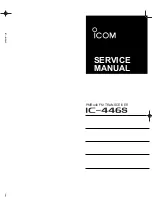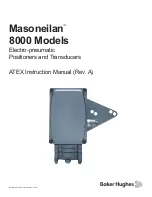
22
Section 4
Model 752 and 752A Differential Pressure Transmitters
cess being monitored from the monitoring instruments.
3.
Configure the test manifold control valve to connect the output of the test
pressure source to the high port of the DPU and vent the low side of the
DPU to atmosphere.
4. Verify that all electrical connections are properly installed (see electrical
5. Apply the appropriate power supply voltage to the transmitter. (To deter-
)
6.
Exercise the transmitter by applying 0% and 100% calibration pressures
If performing a calibration
check only, proceed to step 10
.
7.
Apply the calibration pressure for the 0% checkpoint (as specified in
). Adjust the zero control potentiometer as required to
produce the recommended output level.
8.
Apply the calibration pressure for the 100% checkpoint (as specified in
). Adjust the span control potentiometer as required to
produce the recommended output level.
9.
Repeat steps 7 and 8 until no further refinements can be made.
10. Apply the calibration pressures referred to in
starting
from 0% to 100%, and record the applied pressures and the output levels
at each measurement.
11.
Repeat the calibration checks in descending order, from 75% to 0%, and
record the applied pressures and the output levels at each measurement.
12. Repeat steps 10 and 11 until you have completed three consecutive runs
and have recorded all relevant data.
Note:
If correct readings cannot be obtained, refer to the troubleshooting sug-
gestions in Tables 4.3 and 4.4, or return the unit to the manufacturer for
repair and calibration.
DPU Inspection and Cleaning
To inspect and clean the DPU, perform the following steps.
1. Remove the instrument from service and remove pressure housing bolts.
2. Carefully remove the pressure housings.
Note:
If accumulation of material is extensive, rapid removal of the housings
may damage the bellows convolutions.
3. Remove accumulation from between bellows convolutions and housings
using a solvent, if possible.
Note:
Do not use sharp instrument to clean between bellows convolutions.
















































